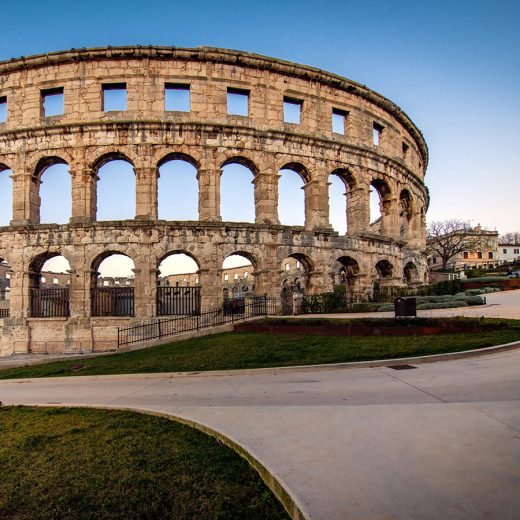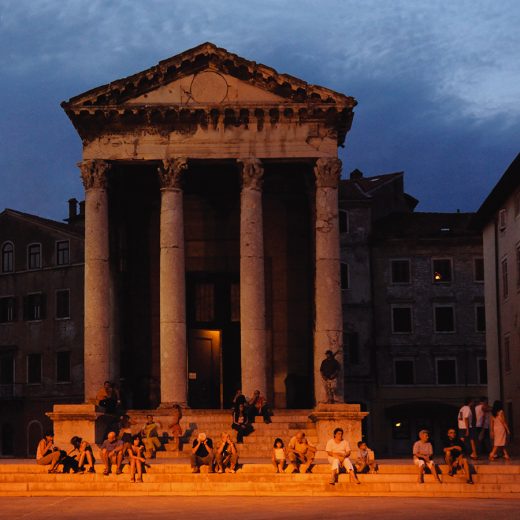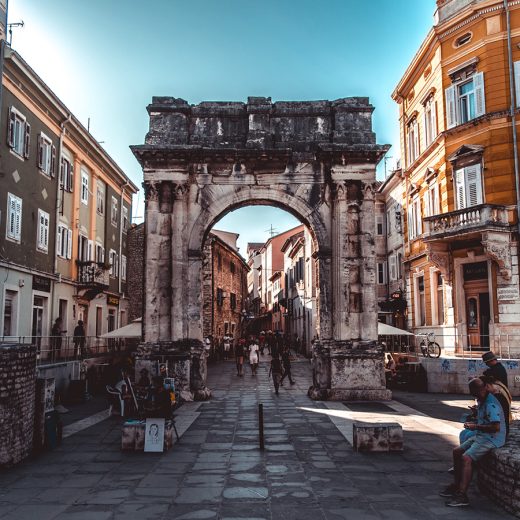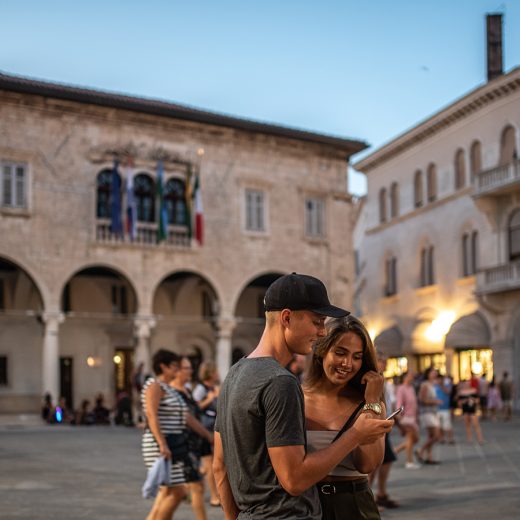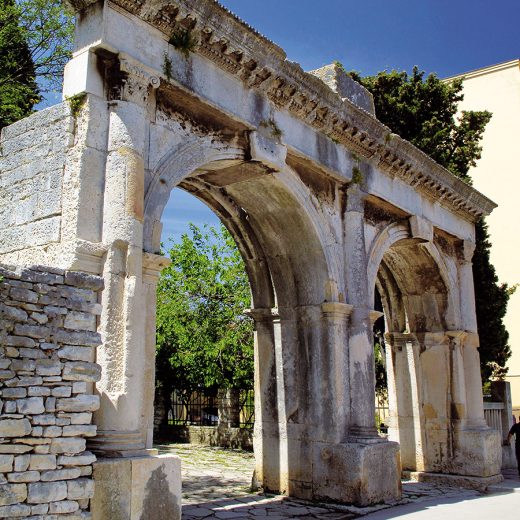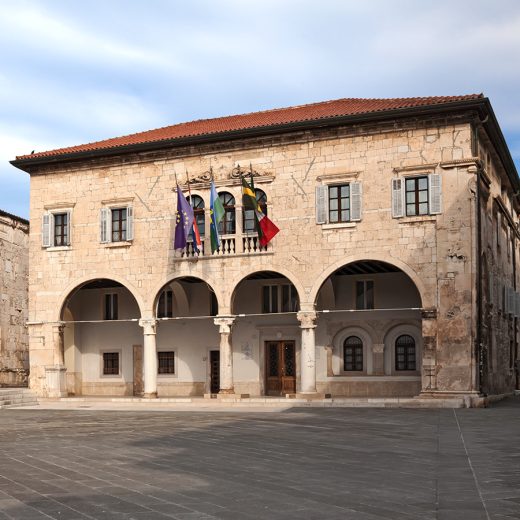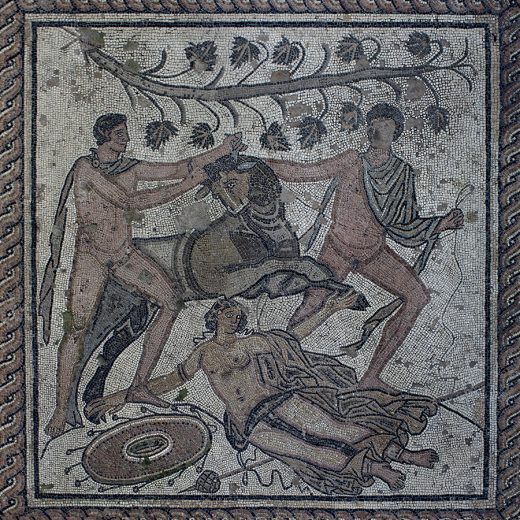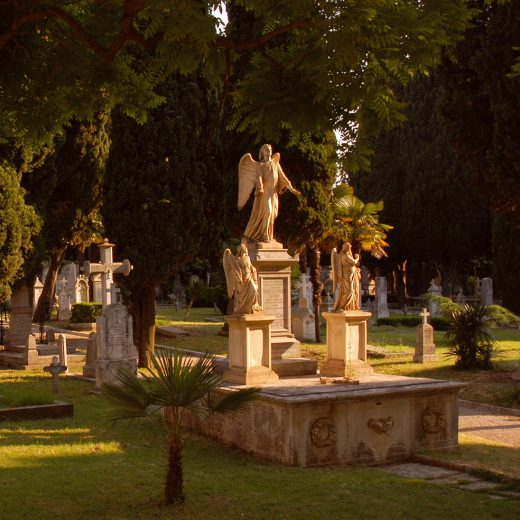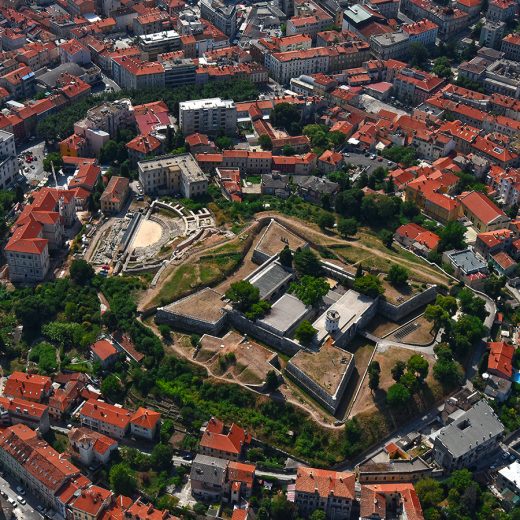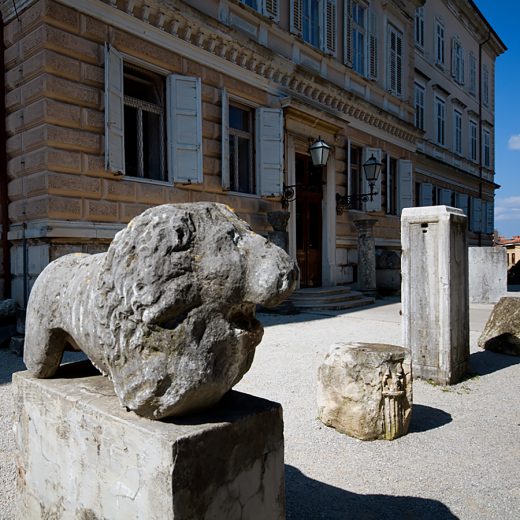The renovation of the Small Roman Theatre in Pula has integrated the remains of one of the most important ancient monuments in Croatia into the modern fabric of the city, in order to create yet another meeting point for the citizens while combining rich cultural heritage and contemporary performing arts, as well as to highlight Pula and Istria as an important cultural and artistic production spots.
The Small Roman Theatre was restored to its original function after two thousand years and, after a demanding renovation, represents one of the most spectacular concert, theatre and performance spaces in general in this part of Europe. Conceived as a stage for hosting top cultural events, which can also be watched on a monumental, 330 square metre screen placed on the back facade of the Archaeological Museum of Istria, the Small Roman Theatre together with the Pula Arena forms an architectural complex of unique monumental value, atmosphere and acoustic quality.
The history of the Small Roman Theatre dates back to the 1st century AD, when within the city walls, on the slope of the hill below the Kaštel fortress, it served the cultural needs of the then population of Pula. In its original form it could accommodate between 3,000 and 5,000 spectators, while the reconstructed version can hold about 1,250 people.
After nearly two decades of neglect, the Small Roman Theatre was renovated using a contrast method, with steel and white concrete, while taking exceptional care to ensure that the foundations of the new structure did not touch or endanger the Roman remains of the building in any place. The raised seating stands were built without any nuts or bolts so as not to disturb the acoustics of the space, and the height and depth of the stairs correspond to their original proportions, whereby respecting the 1:2 ratio, according to the instructions from the Ten Books on Architecture by the famous Roman architect Vitruvius, from the 1st century BC.
The reconstruction project of the Small Roman Theatre received a special recognition award at the Piran Days of Architecture, and was also nominated for the Bernardo Bernardi award.

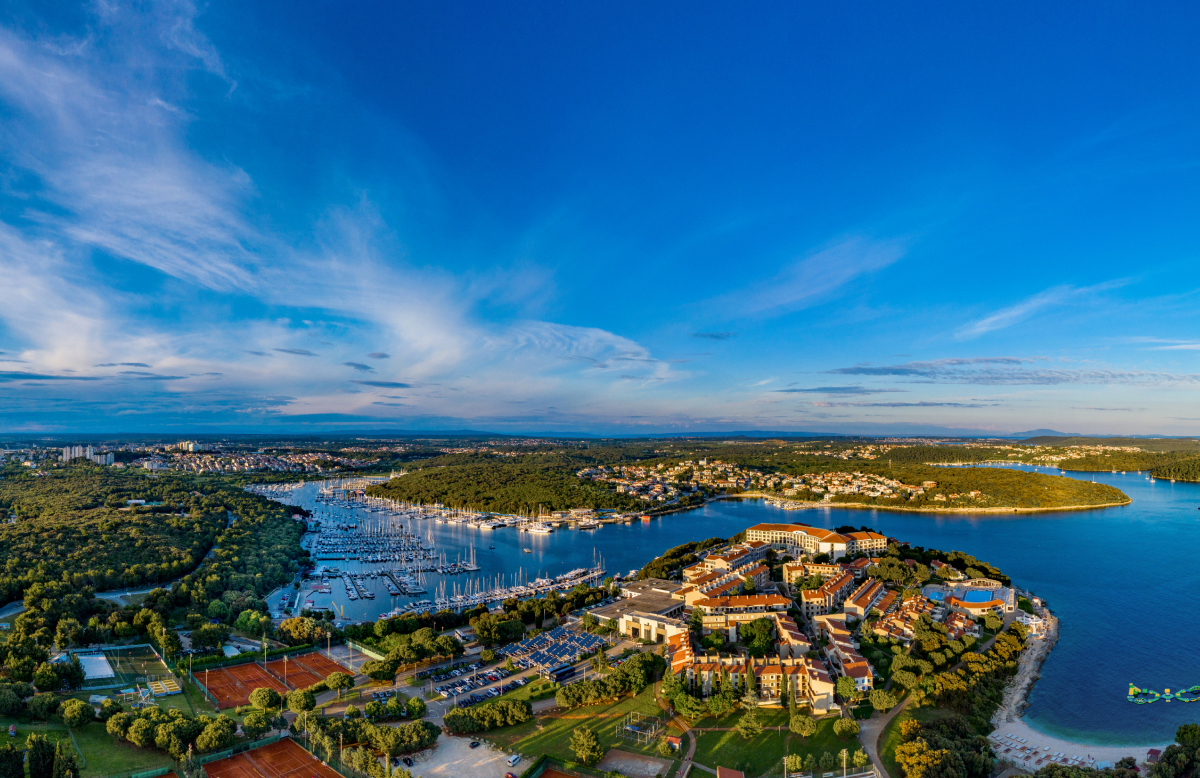
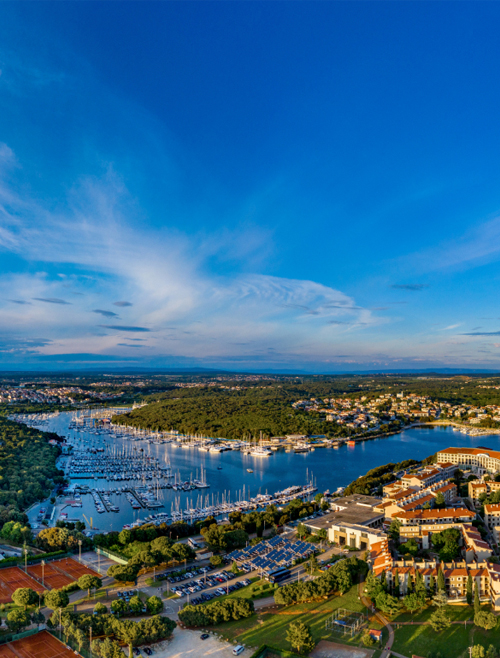
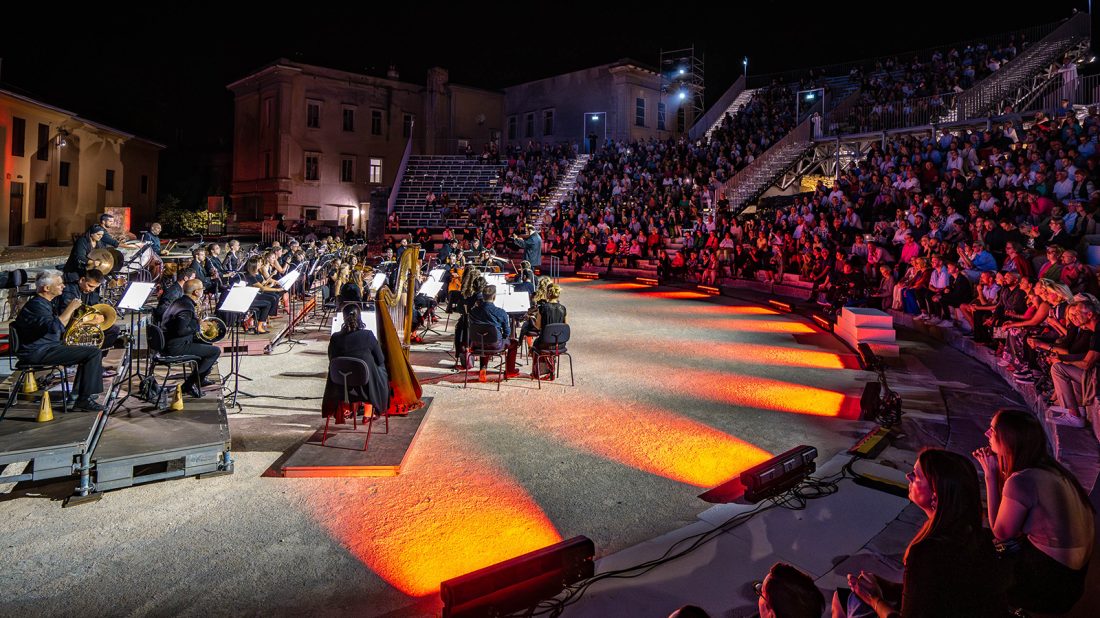
 Arena
Arena 